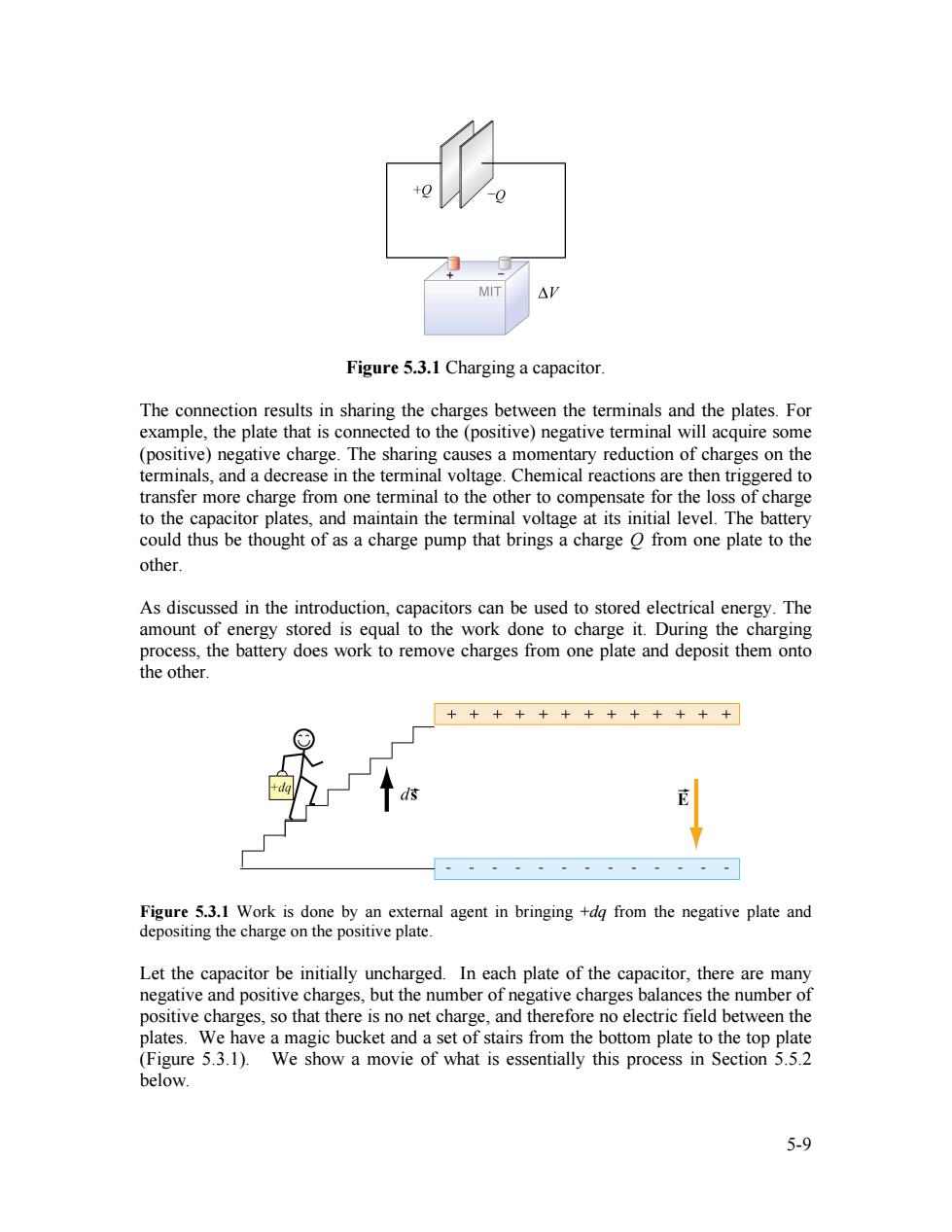正在加载图片...

MIT Figure 5.3.1 Charging a capacitor. The connection results in sharing the charges between the terminals and the plates.For example,the plate that is connected to the (positive)negative terminal will acquire some (positive)negative charge.The sharing causes a momentary reduction of charges on the terminals,and a decrease in the terminal voltage.Chemical reactions are then triggered to transfer more charge from one terminal to the other to compensate for the loss of charge to the capacitor plates,and maintain the terminal voltage at its initial level.The battery could thus be thought of as a charge pump that brings a charge o from one plate to the other. As discussed in the introduction,capacitors can be used to stored electrical energy.The amount of energy stored is equal to the work done to charge it.During the charging process,the battery does work to remove charges from one plate and deposit them onto the other. +十+++++++++++ Figure 5.3.1 Work is done by an external agent in bringing +dg from the negative plate and depositing the charge on the positive plate. Let the capacitor be initially uncharged.In each plate of the capacitor,there are many negative and positive charges,but the number of negative charges balances the number of positive charges,so that there is no net charge,and therefore no electric field between the plates.We have a magic bucket and a set of stairs from the bottom plate to the top plate (Figure 5.3.1).We show a movie of what is essentially this process in Section 5.5.2 below. 5-95-9 Figure 5.3.1 Charging a capacitor. The connection results in sharing the charges between the terminals and the plates. For example, the plate that is connected to the (positive) negative terminal will acquire some (positive) negative charge. The sharing causes a momentary reduction of charges on the terminals, and a decrease in the terminal voltage. Chemical reactions are then triggered to transfer more charge from one terminal to the other to compensate for the loss of charge to the capacitor plates, and maintain the terminal voltage at its initial level. The battery could thus be thought of as a charge pump that brings a charge Q from one plate to the other. As discussed in the introduction, capacitors can be used to stored electrical energy. The amount of energy stored is equal to the work done to charge it. During the charging process, the battery does work to remove charges from one plate and deposit them onto the other. Figure 5.3.1 Work is done by an external agent in bringing +dq from the negative plate and depositing the charge on the positive plate. Let the capacitor be initially uncharged. In each plate of the capacitor, there are many negative and positive charges, but the number of negative charges balances the number of positive charges, so that there is no net charge, and therefore no electric field between the plates. We have a magic bucket and a set of stairs from the bottom plate to the top plate (Figure 5.3.1). We show a movie of what is essentially this process in Section 5.5.2 below